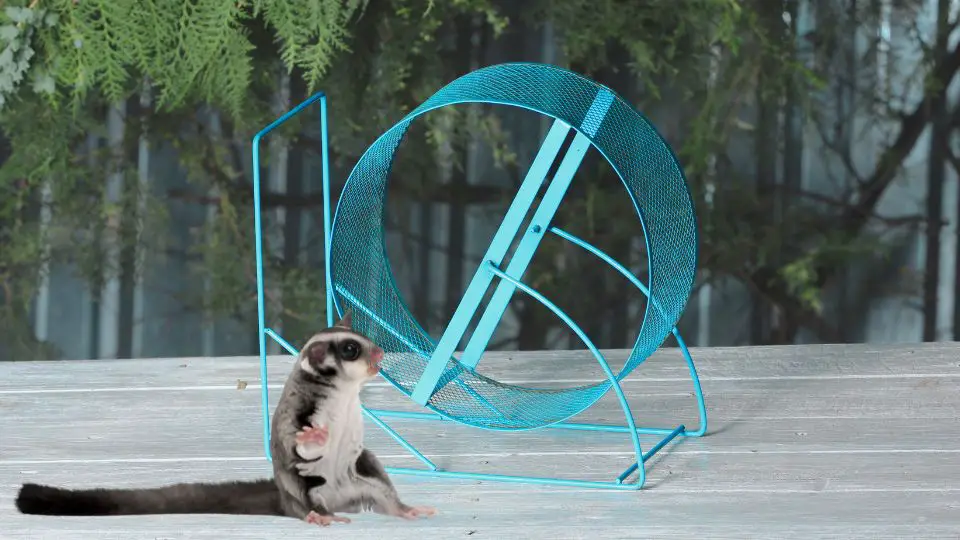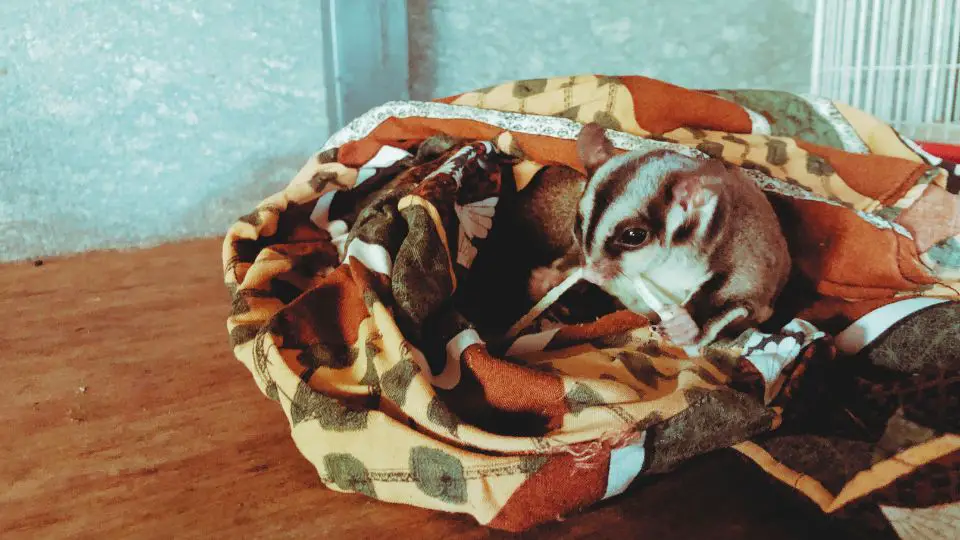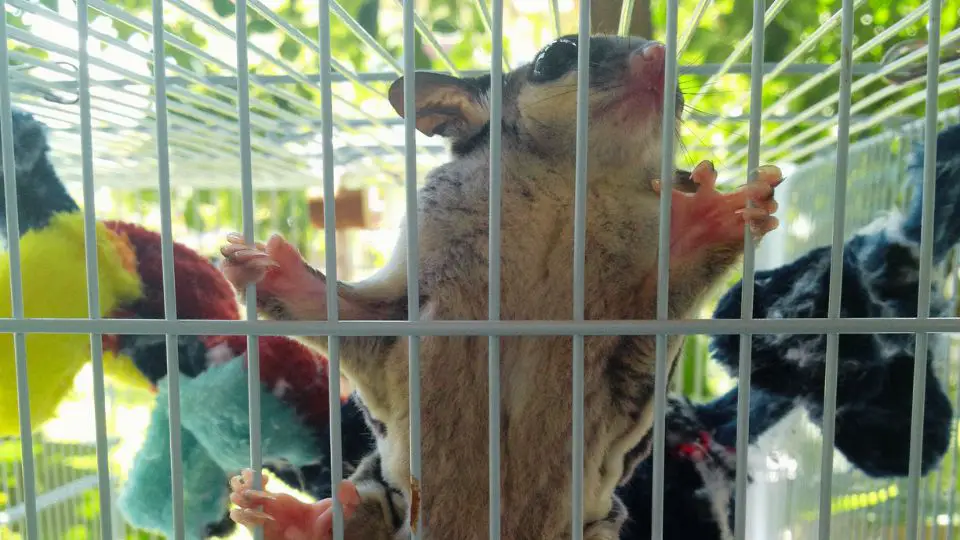Sugar gliders are delicate creatures, and their health can deteriorate quickly if they are not well cared for. If you think your sugar glider may be dying, there are some signs you can look into.
First, they will generally become less active and may even sleep more than usual. Additionally, their eating and drinking habits will change, and they may lose interest in food and water altogether. Finally, their fur will often become matted and they may start to lose weight.
In this article, we will talk about all the signs that your sugar glider may be sick, what can cause your sugar glider to die and what can you do to prevent it so that you and your little friend can have a long and happy life together.
Signs that your sugar glider is very sick
There are some signs you can look into that will help you tell if your sugar glider is very sick and is on the verge of dying.
Refusing to eat or drink
A sugar glider who refuses to eat or drink is a sick sugar glider. If your sugar glider has not eaten in 12 hours or more, then this is a sign that something is wrong. Sugar gliders need to eat every few hours to maintain their blood sugar levels.
Sugar gliders can go about 3 days without food, and only 12 hours without water. So, if you observe that your little pet gets close to this amount of time without eating or drinking, it is an alarm that something is not right.
Sugar gliders who refuse to eat or drink become very weak, lethargic, and weight loss is common. If your sugar glider has any of these symptoms, then you should take them to the vet immediately.
Lethargy
Lethargy is when your sugar glider feels tired all the time and does not have the energy to move around or play. If your sugar glider is not their usual playful self, and you notice they are sleeping more than usual, then this is a sign that something is wrong.
Weakness
If your sugar glider is weak, they will not be able to move around as much as they usually do. You may notice that they are not able to climb as high as they used to, or that they are not jumping as much.
Moving slow is a sign of weakness in sugar gliders.
Shivering
Shivering is when your sugar glider’s body trembles. This is a sign that your sugar glider is cold, and it is a sign that their body is shutting down.
When cold, sugar gliders can enter a state of torpor. Torpor is when sugar gliders lower their body temperature to save energy. This is a survival mechanism, and it is not something that should be happening.
Mood change
If your sugar glider’s mood changes, this is a sign that something is wrong. Sugar gliders are very active and playful animals. If you notice that your sugar glider is not as playful as usual, or if they are aggressive, then this is a sign that something is wrong.
Sugar gliders who are sick will also make a chattering noise. This is a sign that they are in pain, and it is a sign that they are dying.
Difficulty in breathing
If your sugar glider is having difficulty in breathing, then this is a sign that they are not getting enough oxygen. This can be caused by a number of things, but the most common cause is respiratory infection.
Respiratory infection can happen when sugar gliders are exposed to cold temperatures or the little pet caught a virus or has a bacterial infection.
Vomiting or diarrhea
If your sugar glider is vomiting or has diarrhea, then this is a sign that their digestive system is not working properly. This can be caused by a number of things, but the most common cause is dehydration.
What kills a sugar glider?
There are a number of things that can cause a sugar glider to die. Sure, the most common cause of death in sugar gliders is not getting enough to eat or drink, but there can be other causes.
Exposure to chemicals
One of the most common causes of death in sugar gliders is exposure to chemicals. This can happen if the animal is left in a cage that has been treated with pesticides or other chemicals. It can also happen if the sugar glider comes into contact with something that has been treated with chemicals, such as a carpet that has been treated with insecticide.
Sugar gliders are very sensitive to chemicals, and even small amounts can be deadly. If you think that your sugar glider has been exposed to chemicals, then you should take them to the vet immediately.
Toxic food
Another common cause of death in sugar gliders is eating something that is toxic to them. Sugar gliders are very curious animals, and they will put anything in their mouth. This means that they are at risk of eating something that is poisonous to them.
There are a number of things that are toxic to sugar gliders, including:
- chocolate,
- coffee,
- tea,
- avocado,
- garlic,
- brussels sprouts,
- high amount of nuts.
Also, tap water can be toxic for your little glider friend, as it contains chlorine and other chemicals. Make sure to give them only distilled or bottled water to drink.
Lack of oxygen
This can happen if the animal is left in a cage that is too small, or if the cage is not well ventilated. Sugar gliders need a lot of oxygen, and if they don’t have enough, then they can die. This is why it is so important to make sure that their cage is big enough and that it has good ventilation.
Disease
There are a number of diseases that can kill sugar gliders. The most common is respiratory infection, but other diseases, such as cancer, can also be deadly.
Aging
Of course, like all animals, sugar gliders will eventually die of old age. The average life span of a sugar glider is about 10-15 years.
If you think that your sugar glider is dying, then the best thing to do is to take them to the vet immediately. This way, the vet can determine what is wrong and whether or not there is anything that can be done to save the animal.
How to prevent your sugar glider from getting ill
The best way to prevent your sugar glider from getting ill or dying is to take care of them properly. This includes:
Providing them with a large cage that has good ventilation
It’s important that your furry friend has enough space to move around and that the cage is well ventilated.
Giving them a diet that is rich in vitamins and minerals
A healthy diet is important for all animals, and sugar gliders are no exception. You should give them a diet that is rich in vitamins and minerals, as well as a variety of different fruits and vegetables.
Making sure they have access to fresh water at all times
It’s important that your sugar glider has access to fresh water at all times. Tap water can be toxic to them, so make sure to give them only distilled or bottled water to drink.
Keeping their cage clean and free of debris
A clean cage makes a happy pet. Make sure to clean their cage on a regular basis and remove any debris that might have accumulated.
Taking them to the vet for regular check-ups
Just like all animals, sugar gliders need to see the vet for regular check-ups. This way, any health problems can be caught early and treated accordingly.
Sugar gliders are delicate creatures, and they need to be taken care of properly in order to stay healthy. If you follow these tips, then you can help to ensure that your sugar glider lives a long and healthy life.
Wrap up
In conclusion, it is important to take care of your sugar glider properly in order to prevent them from getting ill or dying. This includes providing them with a large cage that has good ventilation, giving them a diet that is rich in vitamins and minerals, and making sure they have access to fresh water at all times.
Additionally, you should keep their cage clean and free of debris, and take them to the vet for regular check-ups. If you follow these tips, then you can help to ensure that your sugar glider lives a long and healthy life.







